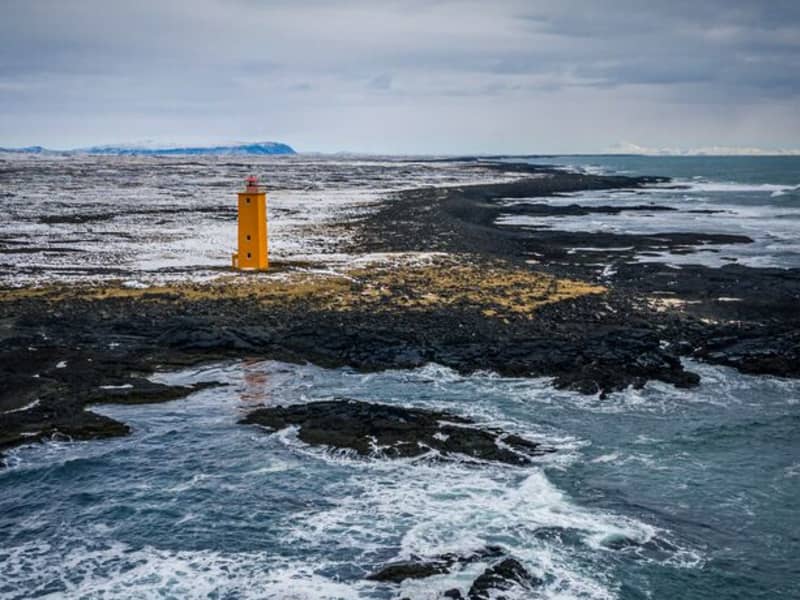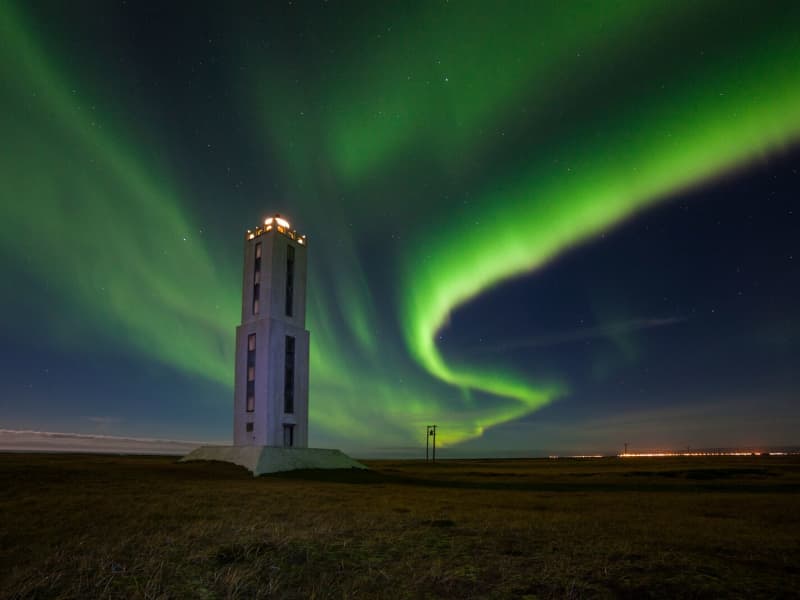Selvogsviti is 15 meters high with the height of the light being 21 meters above sea level. It is also the oldest of the three lighthouses, it was built in the year 1919 and then rebuilt in 1931.
Hafnarnesviti is 8 meters high with the height of the light being 12 meters above sea level. It was built in the year 1951.
Knarrarósviti is 22 meters high with the height of the light being 30 meters above sea level. The lighthouse was built in the year 1939.
Fishing from the glacial sands
The south coast of Iceland has virtually no harbours. Poor harbours are located at Eyrarbakki and Stokkseyri but there is nothing else on the mainland until you reach Höfn í Hornafirði. The island of Heimaey in the Vestmannaeyjar archipelago on the other hand has an excellent harbour and for centuries has been the most important centre of fishing in Southern Iceland. Þorlákshöfn has also long been used by fishermen.
Over the centuries this harbourless coast has become the final resting place of numerous ships, both foreign and Icelandic. A port for the ferry to the Vestmannaeyjar was opened in 2010. Its location means that it regularly experiences problems due to the amount of sand accumulating in the harbour. At the beginning a large proportion of this sand was due to sediment brought down to the sea by the river Markarfljót following the Eyjafjallajökull eruption, which happened the same year as the harbour was opened.
In open rowing boats on the surf-beaten shore
In the past it was common to fish from open rowing boats along the south coast, particularly in the Mýrdalur and Eyjafjöll districts. Fishing was a vital part of the local economy and the main salvation in times of hardship. This type of fishing has long since ceased as it was highly perilous and many boats and lives were lost in the heavy surf when coming ashore or entering the sea on the harbourless coast.
The fishing station at Þorlákshöfn
Þorlákshöfn was a typical fishing station, attracting farmers and workers from other parts of the country during the fishing season, often the winter fishing season which lasted from 2 February to 11 May. Þorlákshöfn possesses an excellent natural harbour and is close to rich fishing grounds. In the period when rowing boats were used it was not uncommon for 30-40 boats to be fishing from Þorlákshöfn, meaning that 300-400 people lived in the fishing station over the season, living in dwellings made of stone and turf. People brought food with them from home. This way of life tested the fishermen both physically and mentally and they entertained themselves on land by playing games, reciting poetry and telling stories.


